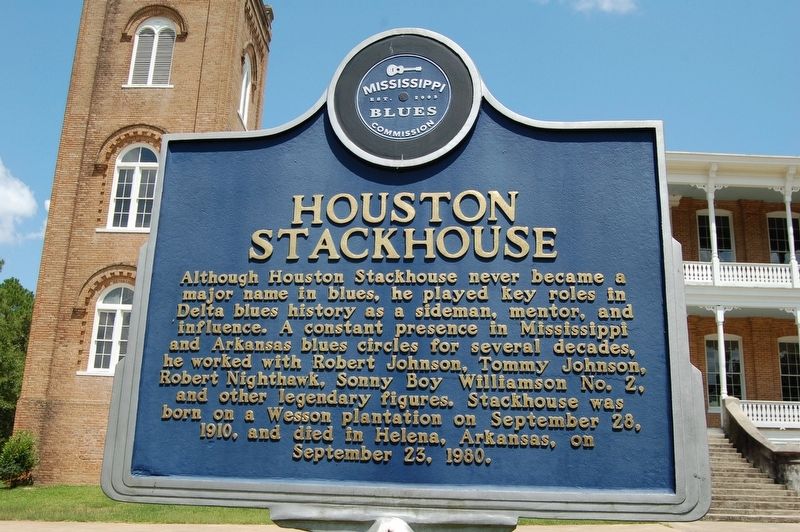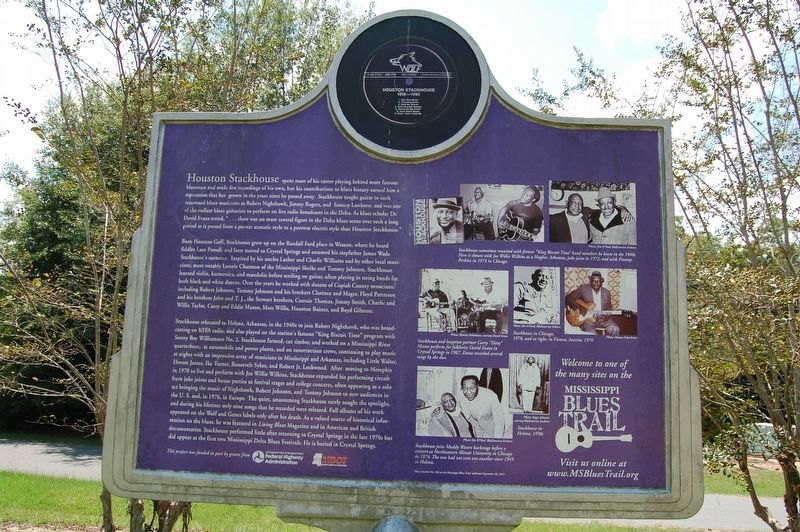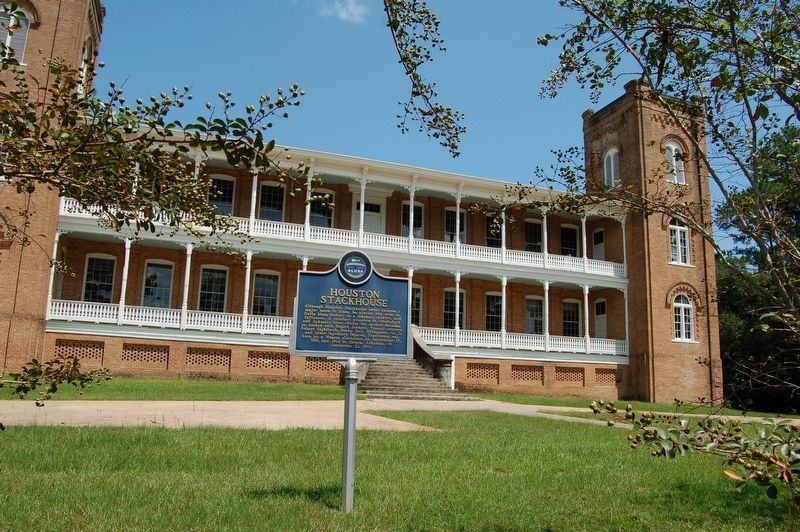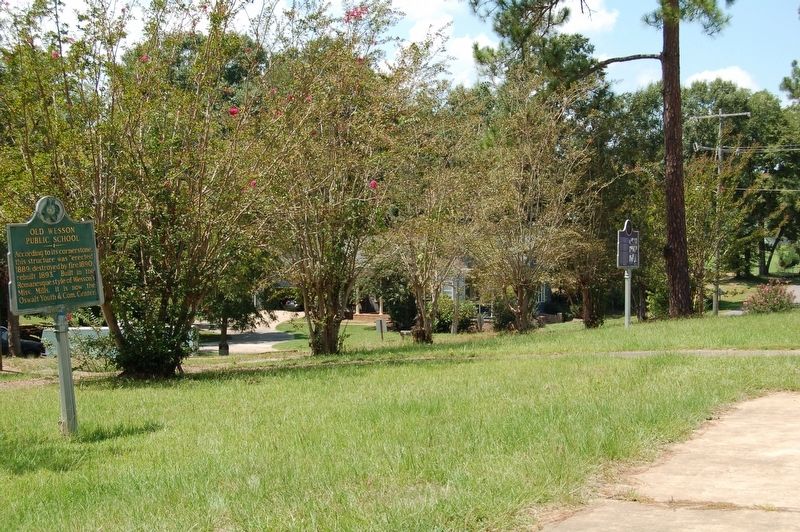Houston Stackhouse
Front
Although Houston Stackhouse never became a major name in blues, he played key roles in Delta blues history as a sideman, mentor, and influence. A constant presence in Mississippi and Arkansas blues circles for several decades, he worked with Robert Johnson, Tommy Johnson, Robert Nighthawk, Sonny Boy Williamson No. 2, and other legendary figures. Stackhouse was born on a Wesson plantation on September 28, 1910, and died in Helena, Arkansas, on September 23, 1980.
Rear
Houston Stackhouse spent most of his career playing behind more famous bluesmen and made few recordings of his own, but his contributions to blues history earned him a reputation that has grown in the years since he passed away. Stackhouse taught guitar to such renowned blues musicians as Robert Nighthawk, Jimmy Rogers, and Sammy Lawhorn, and was one of the earliest blues guitarists to perform on live radio broadcasts in the Delta. As blues scholar Dr. David Evans noted, " . . . there was no more central figure in the Delta blues scene over such a long period as it passed from a prewar acoustic style to a postwar electric style than Houston Stackhouse."
Born Houston Goff, Stackhouse grew up on the Randall Ford place in Wesson, where he heard fiddler Lace Powell, and later moved to Crystal Springs and assumed his stepfather James Wade
Stackhouse's surname. Inspired by his uncles Luther and Charlie Williams and by other local musicians, most notably Lonnie Chatmon of the Mississippi Sheiks and Tommy Johnson, Stackhouse learned violin, harmonica, and mandolin before settling on guitar, often playing in string bands for both black and white dances. Over the years he worked with dozens of Copiah County musicians, including Robert Johnson, Tommy Johnson and his brothers Clarence and Mager, Floyd Patterson and his brothers John and T. J., the Stewart brothers, Cootsie Thomas, Jimmy Smith, Charlie and Willis Taylor, Carey and Eddie Mason, Mott Willis, Houston Boines, and Boyd Gilmore.Stackhouse relocated to Helena, Arkansas, in the 1940s to join Robert Nighthawk, who was broadcasting on KFFA radio, and also played on the station's famous "King Biscuit Time" program with Sonny Boy Williamson No. 2. Stackhouse farmed, cut timber, and worked on a Mississippi River quarterboat, at automobile and power plants, and on construction crews, continuing to play music at nights with an impressive array of musicians in Mississippi and Arkansas, including Little Walter, Elmore James, Ike Turner, Roosevelt Sykes, and Robert Jr. Lockwood. After moving to Memphis in 1970 to live and perform with Joe Willie Wilkins, Stackhouse expanded his performing circuit from juke joints and house parties to festival stages and college concerts,
often appearing as a solo act bringing the music of Nighthawk, Robert Johnson, and Tommy Johnson to new audiences in the U. S. and, in 1976, in Europe. The quiet, unassuming Stackhouse rarely sought the spotlight, and during his lifetime only nine songs that he recorded were released. Full albums of his work appeared on the Wolf and Genes labels only after his death. As a valued source of historical information on the blues, he was featured in Living Blues Magazine and in American and British documentaries. Stackhouse performed little after returning to Crystal Springs in the late 1970s but did appear at the first two Mississippi Delta Blues Festivals. He is buried in Crystal Springs.Erected by Mississippi Blues Commission. (Marker Number 162.)
Topics and series. This historical marker is listed in this topic list: Arts, Letters, Music. In addition, it is included in the Mississippi Blues Trail series list.
Location. 31° 42.141′ N, 90° 23.39′ W. Marker is in Wesson, Mississippi, in Copiah County. Marker is on Eigth Street north of Cemetery Street, on the right when traveling north. Touch for map. Marker is in this post office area: Wesson MS 39191, United States of America. Touch for directions.
Other nearby markers. At least 8 other markers are within 9 miles of this marker, measured as the crow flies. Old Wesson Public School (a few steps from this marker); Mississippi Mills (approx. 0.4 miles away); Wesson Hotel (approx. 0.4 miles away); Copiah-Lincoln Agricultural High School (approx. one mile away); New Sight School (approx. 4.7 miles away); Smith/Furr Pioneer Homesite (approx. 5.1 miles away); Heucks Retreat School (approx. 5.9 miles away); Pearlhaven (approx. 8.4 miles away). Touch for a list and map of all markers in Wesson.
Credits. This page was last revised on July 2, 2022. It was originally submitted on August 29, 2018, by Cajun Scrambler of Assumption, Louisiana. This page has been viewed 269 times since then and 27 times this year. Photos: 1, 2. submitted on August 29, 2018, by Cajun Scrambler of Assumption, Louisiana. 3, 4. submitted on August 29, 2018.



